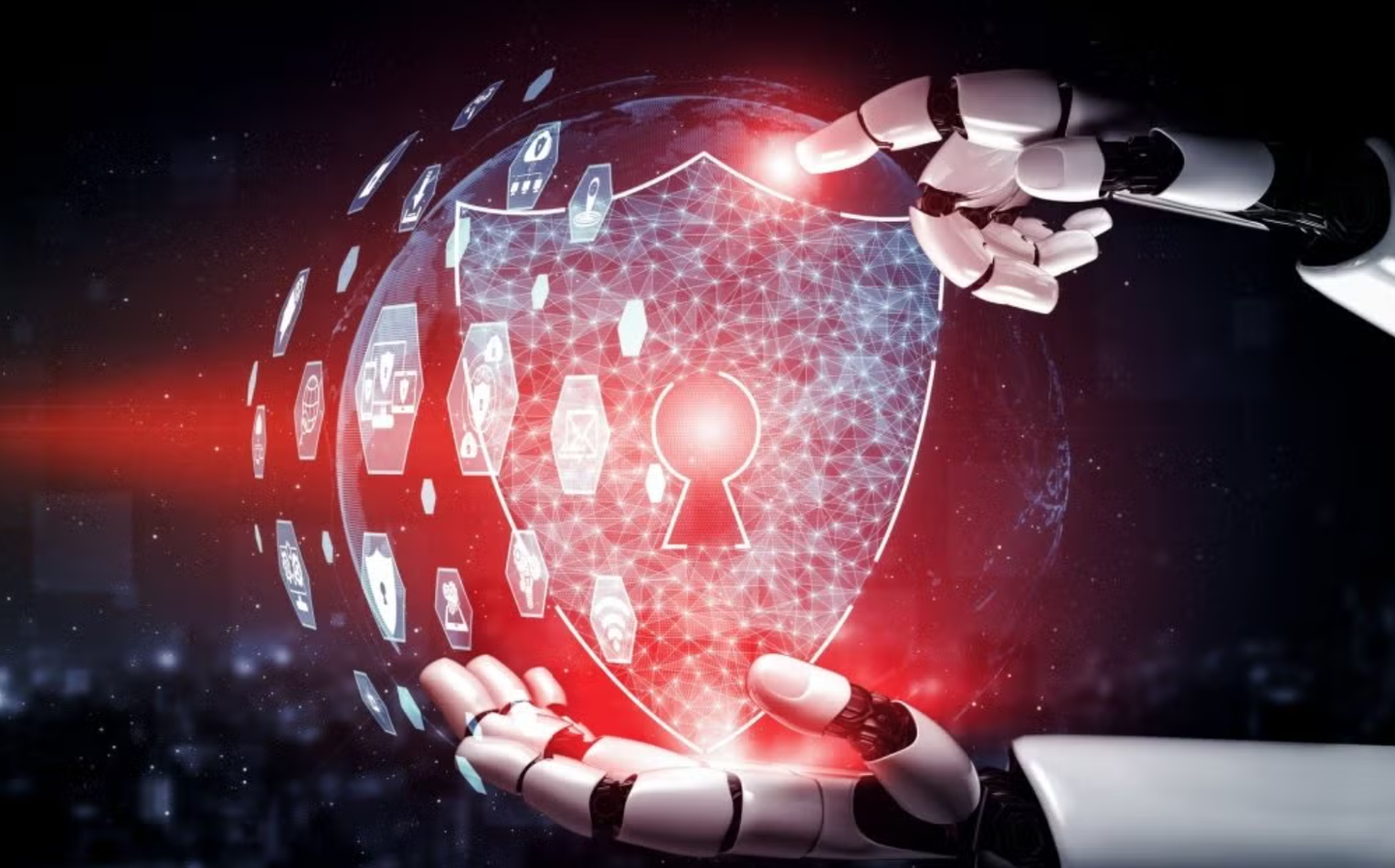Scientists create the next-generation of secure quantum communication
Physicists in Warsaw use a 200-year-old optical effect to simplify high-dimensional quantum key distribution, boosting security and efficiency.

Scientists found a way to make quantum key distribution simpler and stronger, using a centuries-old light trick to push secure communication closer to reality. (CREDIT: Shutterstock)
In this era of instant communication and rising cyber attacks, keeping things secret has never been harder. Quantum computers will make it even harder once they arrive, when someday they will be able to break the math riddles that protect much of your online data.
To stay ahead of the game, scientists are turning to the laws of physics themselves. One of the more hopeful ideas is called quantum key distribution, or QKD, and it uses individual particles of light to create uncloneable secret keys that a hacker cannot copy without leaving behind a signature.
Most QKD systems, until recently, utilized the simplest form of quantum information—two-state particles, or qubits. These exist in one of two possible states, like the familiar binary code of 0s and 1s. While mighty, qubits place limits on speed, efficacy, and the capability of a system to contend with noise.
Researchers have long surmised that the use of higher-dimensional quantum states, qudits, would release faster, more resilient, and more capable encryption. But it has generally required big, costly hardware laden with interferometers and switches to build such systems.
It's when a team at the University of Warsaw stepped in. Their approach minimizes the hardware, but still leverages the benefits of extra dimensions. The secret is an optical illusion that was first described about 200 years ago.
Light, Time, and the Talbot Effect
The innovation is thanks to something known as the temporal Talbot effect, which was first discovered in 1836 by the inventor of photography, Henry Fox Talbot. This classical optics phenomenon is proof that when light passes through a diffraction grating, its own image repeats periodically as if it's reborn.
The Warsaw scientists were aware that the same effect happens with time, too, not just with space. When pulses of light pass through an optical fiber, the pulses may "self-reconstruct" after a certain distance due to natural dispersion. The way in which these pulses overlap is dependent on their phase—the same thing that quantum information needs to be encoded with.
By using this effect, the scientists were able to make detection of complex photon states possible using much less equipment. Instead of needing a forest of interferometers, they could use one photon detector per measurement basis. That small shift makes the entire setup narrower, cheaper, and easier to mass-produce.
Maciej Ogrodnik, a Ph.D. student on the project, phrased it in this way: "Thanks to the space-time analogy of optics, we can generalize the Talbot effect to short light pulses, even single photons—so gaining new capabilities for measuring and processing quantum states."
A Leaner Architecture
In practice, the experiment is incredibly straightforward-looking. The sender—tradiationally called Alice in cryptography—used standard telecom equipment. A laser was chopped into pulses by modulators, a phase-changing device, and an attenuator to control photon numbers made up the transmission line. Alice also included decoy states by varying the intensity of her pulses, a widely published technique to prevent eavesdropping.
On the detection side, Bob measured photons in two modes. In the "time" mode, he simply recorded the time a photon arrived. In the "phase" mode, he routed photons through a dispersive module that dispersed them in time and mapped phase differences into unique arrival-time patterns. Both detection channels went to a superconducting nanowire detector, prized for its sensitivity and minimal noise.
The construction allowed the researchers to try two-dimensional and four-dimensional encodings without rebinding or reconfiguring the equipment. "The trick is that the system requires just one photon detector to measure superpositions of many pulses—instead of a complicated network of interferometers," said PhD student Adam Widomski. "That greatly simplifies and economizes the measurement system."
Trying it in the Lab and the City
The researchers ran their setup in laboratory conditions as well as in Warsaw's city fiber network. In the lab, they simulated distance by dialing up controlled losses. Outdoors, they circulated signals over a 13-kilometer unused city fiber connecting university buildings.
In each configuration, the system was successful. Time basis error rates—utilized to build the end key—were below half a percent, a remarkably small value. The phase basis was greater, as would be expected, since overlapping photon patterns are less easy to separate when timing precision isn't precise. Regardless, the increased-dimensional encoding consistently yielded more bits per photon, therefore increasing the overall raw key rate.
"Strength of our method is its high efficiency, as all photon detection events are useful," said Widomski. "The drawback is a rather high error rates in measurements. But these do not impede QKD, as we proved in cooperation with quantum cryptography theorists."
Why Errors and Security Proofs Matter
Not all errors are human-like in quantum communication. Some reduce efficiency only, but others potentially allow an eavesdropper to create a window of opportunity. That's why the Warsaw group also tested the security of their protocol quite heavily.
They first tested outcomes with a standard but simplified model assuming equal detection probabilities for both bases. In this view, the system generated high secure key rates in laboratory and city experiments with four-dimensional encoding outperforming two-dimensional encoding.
But things weren't quite that tidy. The phase channel experienced further losses from the dispersion module so wasn't quite as sensitive at detecting photons as the time channel. That might be an asymmetry an attacker could use to his advantage.
To manage this, the researchers employed a better security proof developed by collaborators in Italy and Germany. The method includes basis-dependent losses so that asymmetries do not cover up weaknesses. The tighter analysis highlighted the need to equalize the arms for detection.
One quick fix—inserting an attenuator into the time channel to counteract the phase channel—was enough to recover security. With the tweak, the researchers demonstrated that their minimalistic design is still able to generate perfectly secure keys.
A Step Towards Functional Quantum Networks
Dr. Michał Karpiński, director of the Quantum Photonics Laboratory in Warsaw, pointed towards transcending qubits. "In the traditional method, QKD makes use of so-called qubits—the quantum information units of simplest type. Though this method is already widely tested, it is not always enough for more important applications. And therefore physicists are working on multidimensional encoding now."
The researchers' study shows that high-dimensional QKD does not inherently include fragile, sophisticated hardware. Instead, plain telecom-grade hardware can be transformed into a secure system with more information per photon. Their research in Optica Quantum, Optica, and Physical Review Applied demonstrates scientific achievement as well as practical applications.
In the future, the scientists envision easy paths to improvement. Better detectors would emphasize timing precision. Photonic integration would further shrink the system, making it feasible for use across regular networks. And through proper balancing, increasing to higher dimensions in encoding would become the norm in future quantum communication.
Practical Implications of the Research
This research offers a way to build quantum-safe networks that are more robust and simpler. It lowers the hurdle for putting quantum-safe communications into practical networks by showing that high-dimensional QKD can be achieved using minimal hardware. That would allow banks, hospitals, governments, and average citizens to possibly keep their most confidential data safe from even the best quantum computers.
The technique also helps to refine the thinking of scientists on security proofs so that encryption methods are reliable even when faced with real-world vulnerabilities.
Ultimately, this work could accelerate the rollout of quantum-safe networks, helping society protect privacy and trust in the digital age.
Research findings are available online in the journal Optica Quantum.
Related Stories
- AI innovation propels quantum communication into a new era
- New quantum breakthrough could transform computing and communication
- Quantum computing milestone links atoms over vast distances
Like these kind of feel good stories? Get The Brighter Side of News' newsletter.
Shy Cohen
Science & Technology Writer



